INTRODUCTION
Without needing a crystal ball, it is nonetheless predictable that the value of Splinterlands Monster cards will continue their present course of price appreciation. In this section of the Splinterlands Coin Guide, let's investigate why this statement is true, as well as the effect of burning cards for DEC on card prices.
BURNING SPLINTERLANDS CARDS FOR DEC
Right now, prices of monster cards are much higher than they were a year ago. Given this fact, you may be thinking about getting rid of some of those duplicate cards you have not merged and stacking some DEC for airdrop points (or for that card you've been dying to add to your deck).
Sure, you can try and sell it on one of the markets - figure out a sale price, list, keep checking, wait for that hopeful buyer to appear - eh, yes, a major hassle with no guarantee the card will even sell. But never fear, an alternative is available to you to rid yourself of that card and put some DEC in your pocket.
At any point in time you choose, you may 'burn' your card and receive DEC from Splinterlands for said burn. You see, every game card in Splinterlands is backed by a specific amount of DEC. This DEC burn price is, in essence, a price floor for each card (the minimum price you will receive for selling/burning your card).
And just how do you know what this DEC burn price is. Go to your Card Collection page and find the card you wish to burn. Click on it to bring up the card information. On this page, the DEC burn value always appears in the rightmost column.
So, for Kobold Miner, the amount in the rightmost column is the DEC burn value and for burning this card you would receive 15 DEC. This function exists for each and every card you own, so the burning process yields you a return of DEC and in effect reduces the number of the card sold in circulation by one.
As burning reduces the number of cards in circulation, the act of burning cards is deflationary on card supply. Applying basic economics, with a reduction in supply (presuming demand is constant) prices for cards will increase. As well, to complete the circle, the issuance of new DEC to pay for the burn is inflationary. With more DEC available to be spent in the system, coupled with increased demand from all the new players, the supply available in the system for purchasing cards on the market will dry up from increased sales, thereby likewise driving prices higher.
GENERAL INFORMATION CONCERNING CARD PRICE APPRECIATION
An interesting blog was posted approximately four months ago by @flauwy. In it, he investigated the effects of card deflation on price, but he touched upon a very interesting a possibly overlooked source of card deflation, stating:
While an edition is still in "print", it is inflating the numbers of all cards bit by bit. But each edition is limited in total supply and when it reaches the end of its printing cycle, the inflation halts and deflation sets in. We can see this taking place since the end of the Splinterlands Alpha edition, as well as the following Beta edition and the various Reward and Promo cards that are already out of their inflation phase.
[@Flauwy. The Hyperdeflation Of Splinterlands: Why The Cards Are Exploding In Price. (Accessed August 22, 2021)].
In graph format, this appears as follows:
And with the advent of the SPS Airdrop, there has been a meteoric rise in the number of people signing up to play Splinterlands.
With all these new players, card supply is rapidly shrinking with the shelves of the card markets being emptied by players trying to improve their battle decks. The effect? Higher card prices and a higher overall market capitalization for Splinterlands.
CONCLUSION
Burning Splinterlands Cards for DEC clearly is deflationary, causing a resulting increase in card value. Plus the new DEC added in an inflationary fashion likewise drives demand for cards pushing the prices thereof higher.
But card burning is not the only factor affecting the value of Splinterlands cards. Taking into account the resulting effects from the SPS Airdrop, the deflationary effect is exacerbated driving prices and correspondingly market capitalization higher.
All good news for Splinterlands.
Posted Using LeoFinance Beta
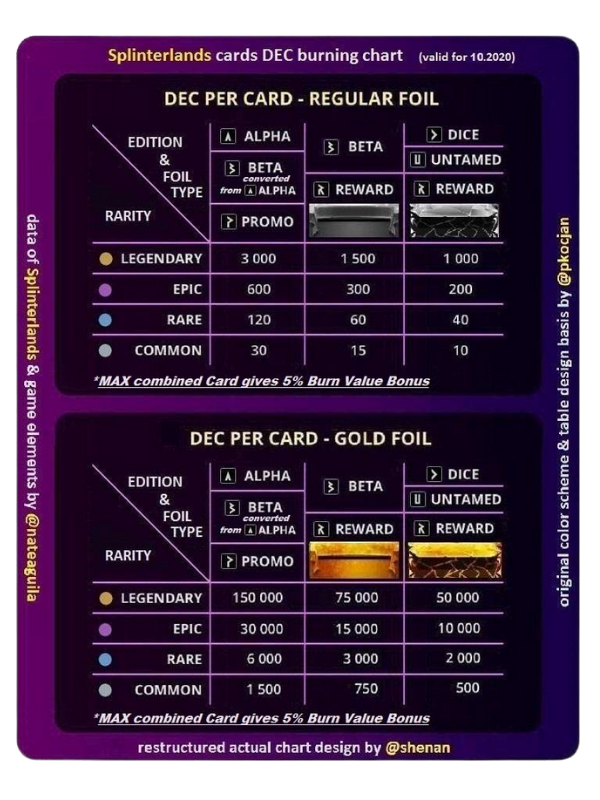
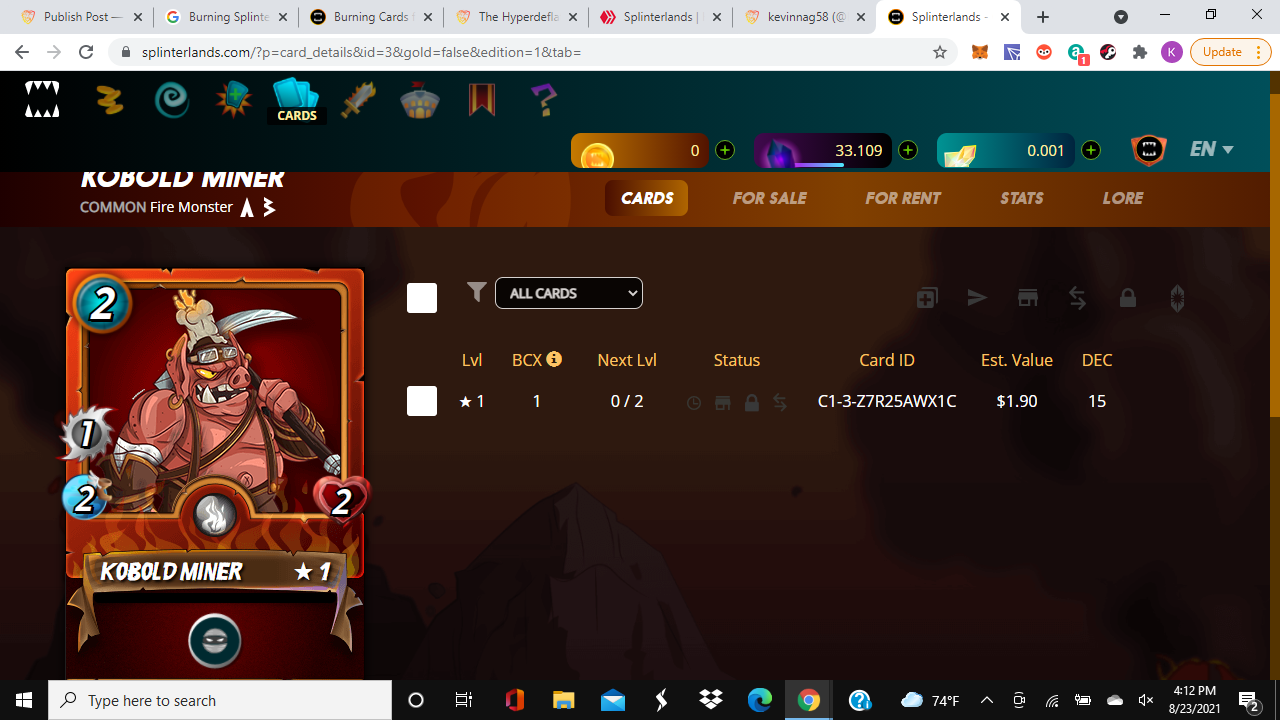
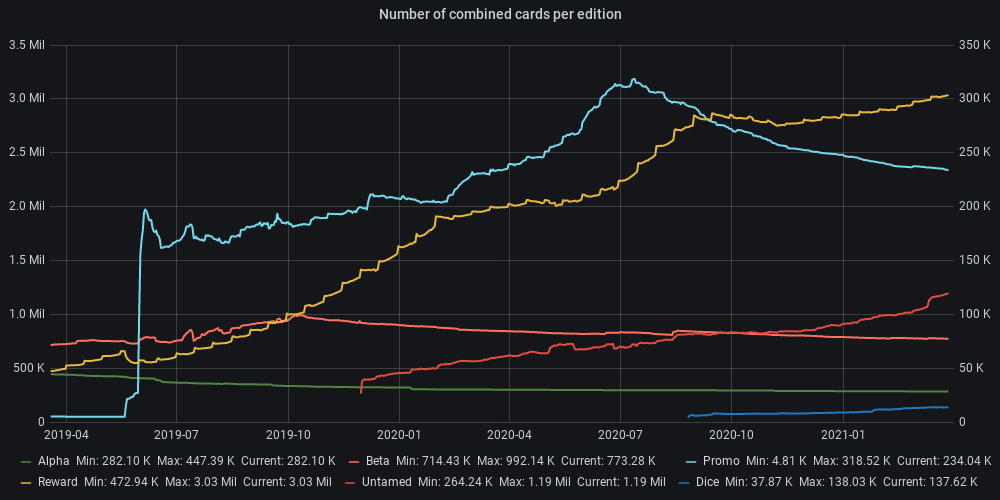
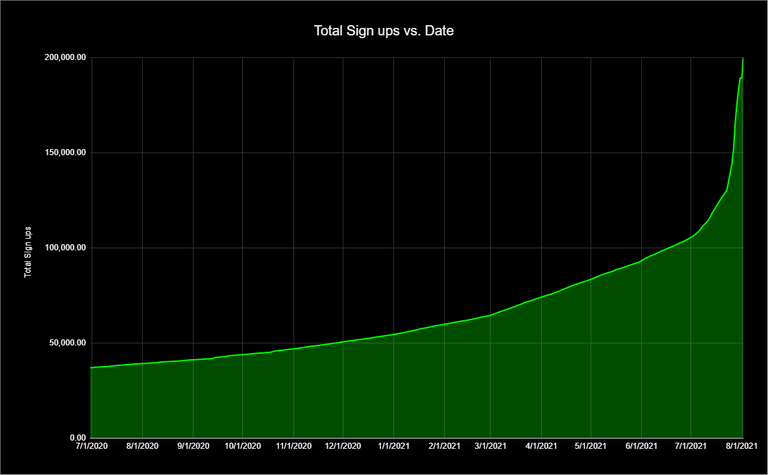
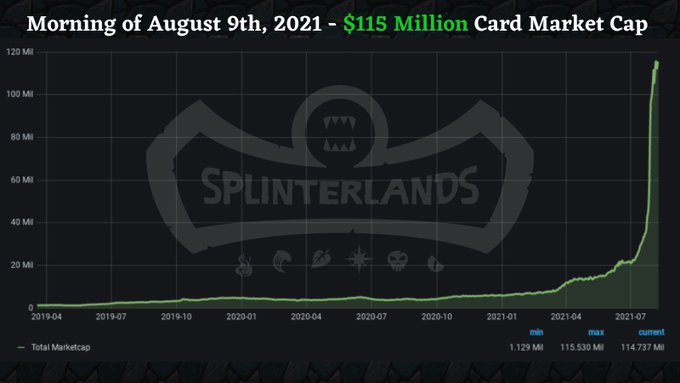
I love this game now!!